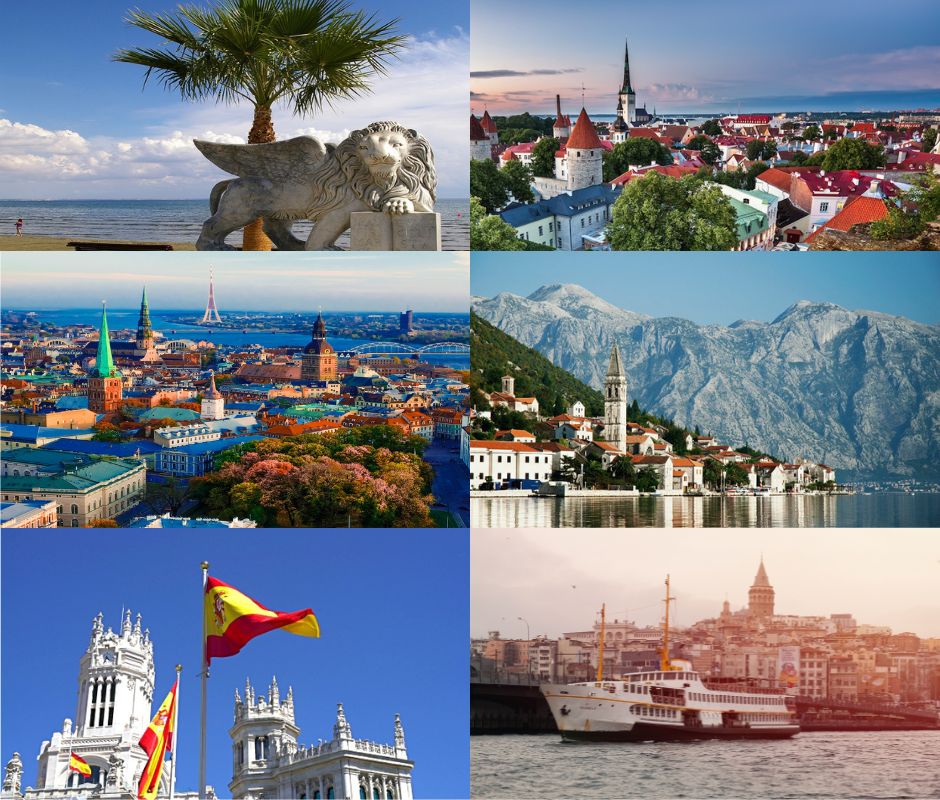Cyprus features diverse migration flows and ranks among the top three EU countries in terms of immigration and emigration rates in the past several years. Since the mid-1980s, following economic growth and the subsequent demand for foreign labour, Cyprus’ net migration has remained predominantly positive. With the shifting of migration routes to Europe and the signing of the EU-Turkey Statement in 2016, Cyprus also become one of the key destinations for asylum-seekers. The country remains de facto divided between the Republic of Cyprus and the Turkish Republic of Northern Cyprus and features a so-called ‘Green Line’, controlled by the United Nations.
For the past thirty years, Estonia has been a country of emigration. However, since 2015, the immigration flow has been steadily growing thereby resulting in a positive net migration, which has also been driving population growth against the negative natural increase. On 31 December 2021, 1.331.824 people lived permanently in Estonia, which is 2.9% more than ten years ago. In 2015, 15.413 people left the country, while 13.003 entered it. The number of immigrants peaked at 19.524 persons in 2021. Meanwhile, the number of emigrants has been declining slowly in recent years, reaching 12.481 people in 2021. The shrinking of the population in the primary migration age (20-40) leads to the decline in migration potential of the country and affects out-migration.
Latvia is a country of origin, transit and destination of migrants. Over the past decade, the population of Latvia has declined by nearly 200.000 persons, partly due to natural decline and partly due to emigration, reaching 1.875.757 in 2022. While observed and potential net migration remains negative, emigration from Latvia is on the decline and its impact on demography is equally decreasing. Latvia faced several waves of emigration, the last of which was related to the economic crisis of 2008/2009. According to the Office of Citizenship and Migration Affairs, over 213.000 Latvian citizens lived abroad in early 2022.
Montenegro is one of the smallest Western Balkan countries featuring a population of 619.211 inhabitants in mid-2021. Over the past decade, the country has been facing both emigration and immigration; however, the latter is more significant. Within Montenegro, people move primarily from the northern regions towards the central and southern parts of the country, and from rural to urban areas, causing depopulation in northern municipalities. The uneven development of the country’s provinces, where the 2021 unemployment rate in the northern region remained as high as 37.3% and in the south accounted for 5.1%, is the primary reason for outmigration from the north to other regions within the country but also abroad.
Throughout its history, the migration profile of Spain has changed several times. Since the late 1980s, Spain has been predominantly an immigration country. The expansion of the Spanish economy turned it into one of the leading immigrant-receiving countries in Europe and globally, and its immigrant population rose from around 500.000 in 1995 to two million in 2004. The economic crisis of 2008, however, had a profound impact on the Spanish job market, which resulted in a sharp decline in immigration and an increase in emigration that lasted until 2014. The trend has again reversed in 2015, and in 2020 the country ranked among the top 10 receiving countries globally. Importantly, while before the 2008 economic crisis the majority of immigrants came to Spain from Latin America and Morocco, the most recent flows feature a larger number of migrants from European and African countries.
Turkey is a country of emigration, immigration and transit. It features a growing and ageing population that reached 84.680.273 in 2021. Around two-thirds of the growth is attributed to natural replenishment and another one-third to immigration. Turkey’s potential net migration rate is negative, yet immigration to the country has been on the rise. Considerable labour emigration of Turkish nationals as of the 1960s resulted in the establishment of a prominent Turkish diaspora abroad, reaching a total of 3.411.408 in 2020.

